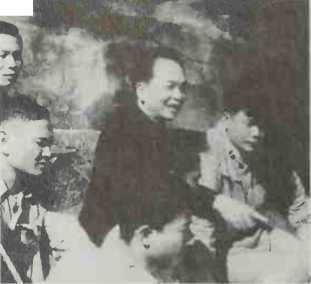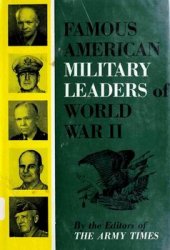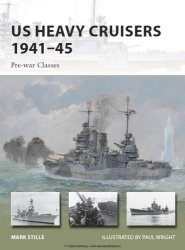Africa, his c50,000 men being opposed by some 8,000 white Schutztruppe under Col Viktor Francke. In February 1915, a twopronged thrust on the capital, Windhoek, began: Botha’s Northern Force moved along the railroad from Swakopmund; Smuts’s Southern Force pushed north from Liideritz and the Orange river. Botha’s advance across the Namib desert, making good use of armoured cars, was met by poisoned wells and improvised land mines; the main stand against Smuts’ force was made at Gibeon, April 25-26. Some 6,000 Schutztruppe made an orderly retreat to Windhoek, but when Botha entered the city on May 12, resistance was minimal. The main German force marched north to the Grootfontein-Otavi area, where they surrendered on July 9, having suffered 1,331 killed. South African and Rhodesian losses in Botha’s skilful campaign amounted to 266 dead and 263 wounded. RO’N.
Gerow, Lt Gen Leonard Townsend (1888-1972). US. Head of the War Plans Division when the US entered World War II. In February 1942 he took command of the 29th Division, and the following year he became commander of the American field forces in Europe. In July 1943 he took charge of V Corps, which landed on Omaha Beach on D-Day under his command. In January 1945, Gerow became commanding general of the US Fifteenth Army. SB.
Gestapo. Acronym of Geheime Stoats Polizei, the German secret police under the Nazis.
G-H. British air to ground to air blind bombing radar system, similar to but the reverse of Oboe. Capable of use by up to 100 aircraft at one time. Introduced October 1943.
Gheluvelt see ypres, first battle OF (1914).
Ghormley, Vice Adm Robert Lee
(1883-1958). US. Ghormley was a senior US Navy representative at Anglo-US staff talks in London and Washington, August 1940-January 1941, during which decisions concerning America’s role.
Should she enter the war, were made. In April 1942 he became Commander, South Pacific Forces and Area, having overall direction of the Solomon Islands campaign until October 1942, when Adm Nimitz, deeming Ghormley insufficiently aggressive in the struggle to establish naval supremacy off Guadalcanal, replaced him with the more charismatic Halsey.
GI (General Issue). Slang for American private soldier (enlisted man).
Giap, Snr Gen Vo Nguyen (b. l912). Democratic Republic of Vietnam. The organizer and chief strategist of Vietnamese communist armed forces in the wars with France and the US. Giap joined the Communist Party in 1933. He had no military training or experience until assigned by Ho Chi Minh in 1941 to construct a revolutionary base area in Cao Bang province. From these beginnings Giap formed in December 1944 a 34-person “Vietnam Propaganda and Liberation Unit”, forerunner of the People’s Army of Vietnam (pavn). The PAVN defeated the French at Dien Bien Phu, using a battle plan originally drawn up with the help of Chinese advisers but revised by Giap. At war’s end in 1954, Giap was Chief of Staff and Minister of Defence of the Democratic Republic of Vietnam (drv).
Giap was a proponent of “People’s War” but modified this doctrine for Vietnamese circumstances. The absence of a vast hinterland in which to manoeuvre and disastrous experiences attacking fortified French outposts in the lowlands convinced him of the need to use main forces cautiously and in close coordination with political struggle behind enemy lines. During the late 1950s, when Soviet aid became available, Giap embraced conventional warfare, but only as a graft upon “People’s War”. Though he supported the war for reunification, he was more reluctant than some other leaders to commit Northern resources to combat in the South, and he increasingly had to share authority over strategic planning. Thus it was Gen Van Tien Dung, not Giap, who took charge of the final offensive in 1975. Giap was implicated in the failure to prepare for Chi-

Master of “People’s War”: Giap
Na’s cross-border attack in February—March 1979, and in February 1980 Dung replaced him as Minister of National Defence. He subsequently was dropped from the Political Bureau and shunted off into minor appointments, though he remained a vice-chairman of the Council of Ministers. WST.
Gibson, Wg Commander Guy, VC
(1918-44). Br. Formed and commanded 617 Squadron, Bomber Command, which he led on the Dams raid of May 1943.
Gideon Force. Irregular troops commanded by Orde Wingate in Northern Ethiopia; paved the way for Haile Selassie’s return to Addis Ababa, April 1941.
Gilbert Islands see Tarawa campaign.
Gillars, Mildred (b. l900). American-born woman, nicknamed “Axis Sally”, recruited by the Germans to broadcast propaganda to American troops during World War II.
Ginchy see somme, battle of the.
Giraud, Gen Henri Honore
(1879-1949). Fr. Captured as captain of Zouaves during World War I, escaped; captured 1940 as general, escaped 1942 first to France and then Gibraltar; shared leadership of Free French movement with De Gaulle, 1943; resigned in April




 World History
World History









